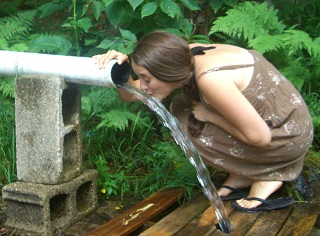From Guest Blogger Lizzie Weakly: How to Protect Your Well Water System

Test Your Water
A key step to taking care of your well water is testing. Annual testing can detect bacteria and other contaminants that could be harmful to your family. It’s a good idea to keep detailed records of each testing so you can monitor changes over time. According to the Water Systems Council, testing once per year should be sufficient unless you are experiencing one of the following:
• Unexplained illness
• Pregnancy or nursing
• Unexplained change in the color, taste or smell of the water
• Chemical spill or possible contaminants near your well
• A water source near you has become contaminated
• Any recent repairs have been made to your well
Location, Location, Location
The location of the well is important when it comes to protecting the quality of the water. Make sure the well is at least 100 feet from septic systems and livestock. It’s also a good idea to make sure there is at least 25 feet between the well and any waterways and sewer lines. Salt storage facilities should be at least 1500 feet from your water well, especially if the salt is in an uncovered location.
Construction is Key
A properly constructed well is the first line of defense when it comes protecting your water. Make sure the well stays in good working condition by inspecting it regularly. A flashlight will help with spotting holes or cracks. If you can move the casing around you may have a potential contamination threat. A tightly fitting cap is an important way to keep pollution and animals from contaminating the water. If the well cap is ill fitting or becoming corroded it’s a good idea to have it replaced.
Prevent Back flow
Backflow is what happens when the hose from the pump to the house changes direction and the water flows back into the well. This can bring contaminants into the water especially if the backflow is coming from something such as a washing machine or sink. Anti-backflow devices can be fairly affordable and are a great way to prevent contamination.
Water quality is increasingly becoming a national concern as more and more contaminants find their way into our waterway and resources become scarce. It is because of this scarcity that all well water users should make protecting their water system a priority. Following these steps can protect your well water system and ensure healthy clean water for you and your family.
